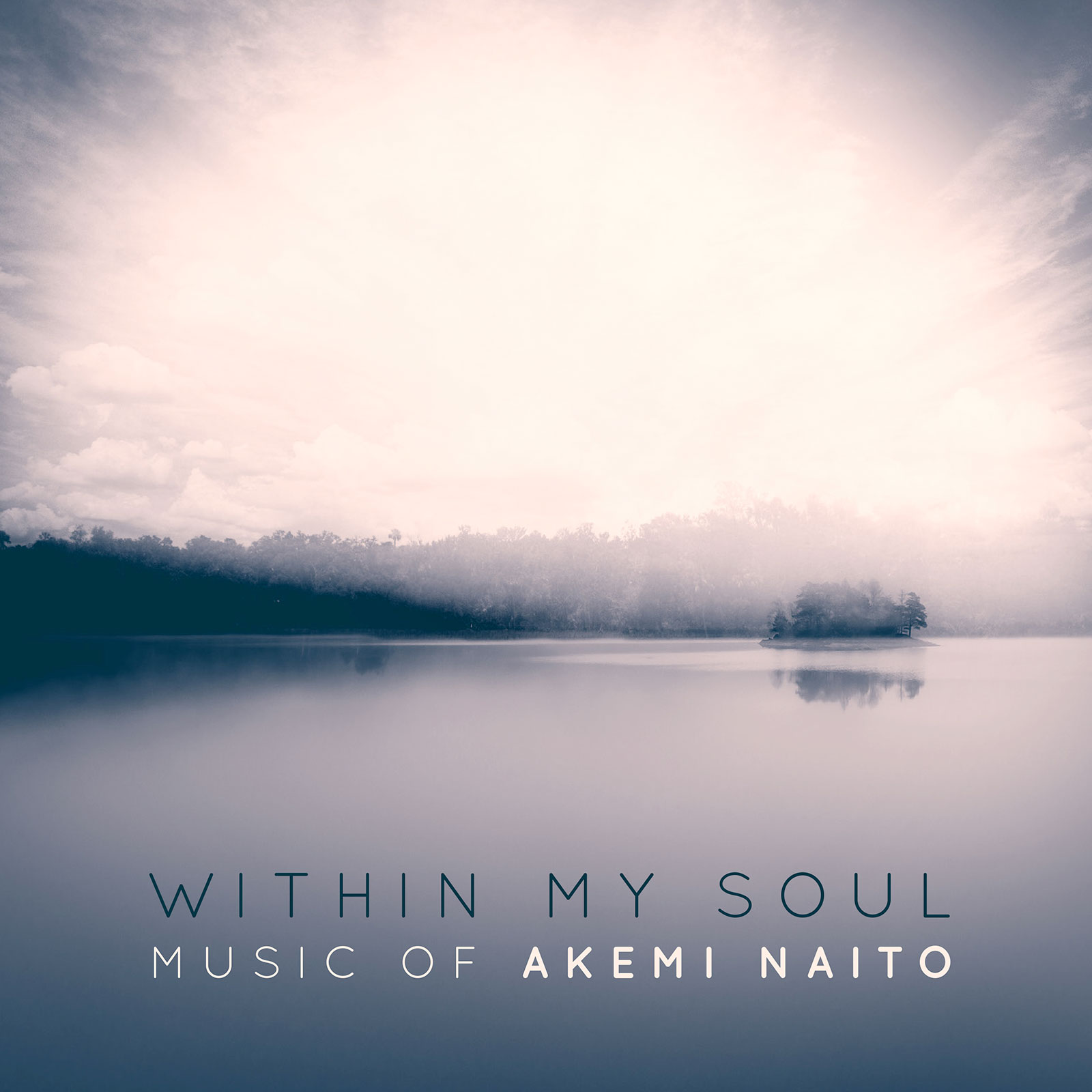
Share Album:
Within my Soul
Akemi Naito composer
On WITHIN MY SOUL, New York-based composer Akemi Naito’s debut release on Ravello Records, the composer’s intent was to create a collection of musical works inspired by words. The poetry and prose that inspired the album’s three pieces were crafted by a trio of writers who transcend the boundaries of time and place: 19th-century British poet and novelist Emily Brontë; 20th-century Japanese novelist Kobo Abe; and Japanese monk-poet Saigyo (1118 – 1190).
The album’s first selection, Emily Brontë: Through Life and Death, A Chainless Soul, is a poetic mono-opera in one act, based on selected poems of Emily Brontë and scored for mezzo-soprano and piano. Opera Wire praised the performance, describing it as “a wonderful example of the beauty that can be found when words mingle with music, each giving the other new life and meaning.”
The Woman in the Dunes for Solo Percussionist was inspired by Japanese writer Kobo Abe’s novel, The Woman in the Dunes. Performed by percussionist Gregory Beyer, the music echoes Abe’s text, using metallic instruments centered on chromatic gongs to express the woman’s emotions and drum instruments to express the turmoil of the male character in the novel.
Five Waka poems by Saigyo was composed as part of famed marimbist Makoto Nakura’s Forest Trilogy project. It is based on the writings of the ancient monk-poet Saigyo, who expressed his free spirit in poems, inspired by nature, that even today continue to stimulate the imagination. On WITHIN MY SOUL, the work is performed by William Moersch on marimba and the University of Illinois Chamber Singers directed by Andrew Megill.
WITHIN MY SOUL is her third recording. Each composition, inspired by the words of Brontë, Abe, and Saigyo and performed by a stellar array of musicians, offers strong proof of the way great art, even as it is transformed by modern influences, endures over time.
Listen
Stream/Buy
Choose your platform
Track Listing & Credits
| # | Title | Composer | Performer | |
|---|---|---|---|---|
| 01 | Through Life and Death, a Chainless Soul, Prologue: I'm Happiest When Most Away (Live) | Akemi Naito | Jessica Bowers, mezzo-soprano; Marilyn Nonken, piano | 1:57 |
| 02 | Through Life and Death, a Chainless Soul, Scene 1: Excerpt from Plead for Me (Live) | Akemi Naito | Jessica Bowers, mezzo-soprano; Marilyn Nonken, piano | 0:53 |
| 03 | Through Life and Death, a Chainless Soul, Scene 1: To Imagination (Live) | Akemi Naito | Jessica Bowers, mezzo-soprano; Marilyn Nonken, piano | 6:33 |
| 04 | Through Life and Death, a Chainless Soul, Scene 2: Excerpt from My Comforter (Live) | Akemi Naito | Jessica Bowers, mezzo-soprano; Marilyn Nonken, piano | 1:47 |
| 05 | Through Life and Death, a Chainless Soul, Scene 2: Anticipation (Live) | Akemi Naito | Jessica Bowers, mezzo-soprano; Marilyn Nonken, piano | 12:28 |
| 06 | Through Life and Death, a Chainless Soul, Scene 3: The Old Stoic (Live) | Akemi Naito | Jessica Bowers, mezzo-soprano; Marilyn Nonken, piano | 3:26 |
| 07 | Through Life and Death, a Chainless Soul, Scene 3: No Coward Soul Is Mine (Live) | Akemi Naito | Jessica Bowers, mezzo-soprano; Marilyn Nonken, piano | 7:28 |
| 08 | The Woman in the Dunes (Version for Solo Percussion) | Akemi Naito | Gregory Beyer, percussion | 18:22 |
| 09 | 5 Waka Poems | Akemi Naito | University of Illinois Chamber Singers | Andrew Megill, conductor/director; William Moersch, marimba | 8:59 |
Emily Brontë – Through Life and Death, A Chainless Soul
Poetic mono-opera in one act
Recorded live January 5 – 6, 2018 at the Tenri Gallery at the Tenri Cultural Institute in New York City NY
Recording & Mixing Oktaven Audio
Video Documentation Cutting Bird Media
DVD Authoring DuArt
DVD Art Installation Toshihiro Sakuma
Published by Akemi Naito Music (ASCAP)
The Woman in the Dunes for Solo Percussionist
Inspired by Kobo Abe’s novel, The Woman in the Dunes
Recorded January 6 – 7, 2014 at the Recital Hall at the Northern Illinois University in DeKalb IL
Producer Alex Rolfe
Recording & Mixing Engineer Dan Nichols
Pre-mastering Engineer Ryan Streber
Published by HoneyRock
Five Waka poems by Saigyo
Recorded February 12, 2019 in the Foellinger Great Hall at the Krannert Center for the Performing Arts in Urbana IL
Recording Producers Andrea Solya, Charlotte Mattax Moersch
Recording Engineers Frank Horger, Graham Duncan
Published by Akemi Naito Music (ASCAP)
Executive Producer Bob Lord
Executive A&R Sam Renshaw
A&R Director Brandon MacNeil
A&R Chris Robinson
VP, Audio Production Jeff LeRoy
Audio Director Lucas Paquette
Mastering Shaun Michaud
VP, Design & Marketing Brett Picknell
Art Director Ryan Harrison
Design Edward A. Fleming
Publicity Patrick Niland, Sara Warner
Artist Information
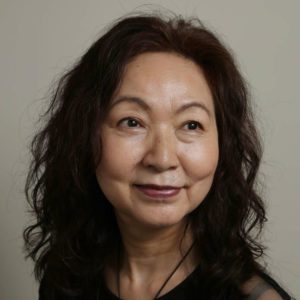
Akemi Naito
Akemi Naito is a composer based in New York City. Born in Tokyo, she studied composition at the University Division of the Toho Gakuen School of Music and was a member of the school’s faculty from 1980 to 1991. Following her earlier activity as a composer in Tokyo, she received a grant from the Asian Cultural Council that enabled her to move to New York City in 1991.

Jessica Bowers
Jessica Bowers has performed with Utah Opera, Anchorage Opera, Opera Boston, Central City Opera, and Ohio Light Opera. Roles include Rosina in The Barber of Seville, Hansel in Hansel and Gretel, The Mother Abbess in The Sound of Music, Nicklausse in The Tales of Hoffmann, and The Queen in John Harbison’s A Full Moon in March. Recently she has performed with Cygnus Ensemble, Taconic Music, Poetica Musica, L’Artiste Ordinaire, Dali Quartet, Composers Concordance, and Satori Ensemble. Most frequently, she plays with guitarist Oren Fader as The Bowers Fader Duo, which produces the annual concert series “New American Art Songs for Mezzo and Guitar,” performed three times each year in New York City. Their debut album, Between Us All, was recently released on the Naxos label through New Focus Recordings. For more information, please visit www.jessicabowers.net
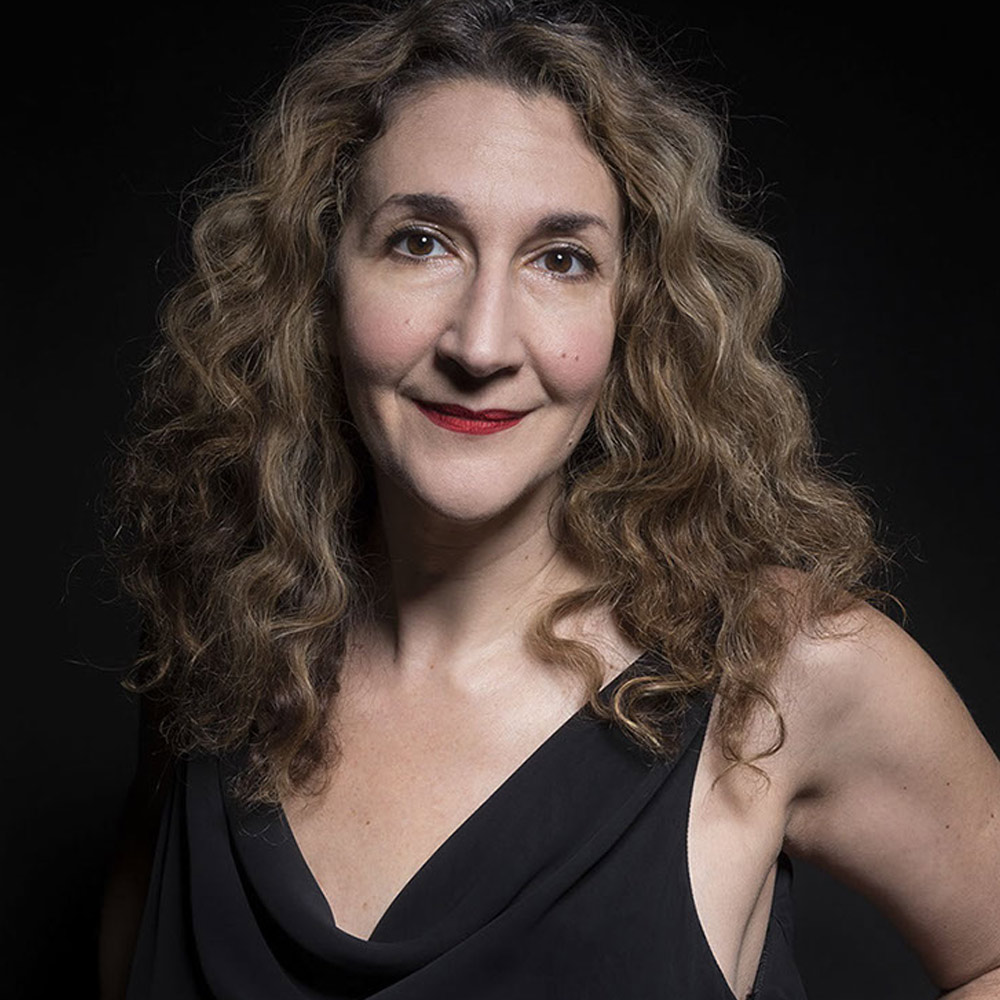
Marilyn Nonken
Marilyn Nonken his recognized as “one of the greatest interpreters of new music” (American Record Guide). Her nearly 30 releases include Tristan Murail: Complete Piano Music, Voix Voilées: Spectral Music for Piano, and Morton Feldman: Triadic Memories. She records for Metier, New World, Mode, Lovely Music, Albany, Divine Art, Hanging Bell, Harrison House, Innova, CRI, BMOP Sound, New Focus, Kairos, Ravello, Tzadik, and Bridge. Composers who have written for her include Richard Carrick, Jason Eckardt, Michael Finnissy, Michael Kuehn, Tristan Murail, Christopher Trapani, and Nina C. Young. She is also known for her writings on music, which include The Spectral Piano: From Liszt, Scriabin and Debussy to the Digital Age (Cambridge, 2014) and Identity and Diversity in New Music: The New Complexities (Routledge, 2019). A graduate of the Eastman School, where she studied with David Burge, she received her Ph.D. from Columbia University. Now Associate Professor of Music at New York University, Nonken is a Steinway Artist. www.marilynnonken.com
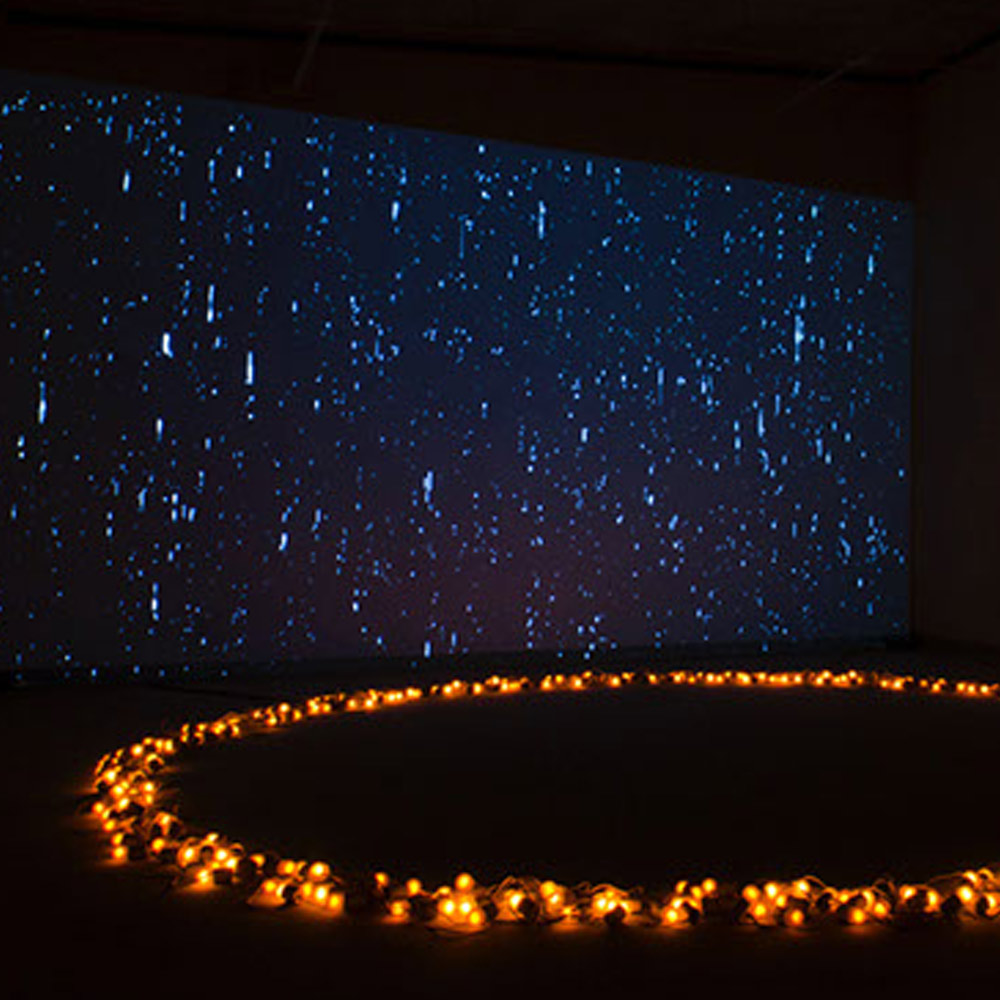
Toshihiro Sakuma
Born in the Miyagi prefecture in Japan in 1957, Toshihiro Sakuma completed graduate school at the Tokyo University of the Arts, receiving his M.F.A. in 1982.
Sakuma started a quiet installation art series called “healing” in 1993. He regarded exquisitely dimmed light bulbs’ ON/OFF as the ON/OFF of life. He placed them in items used in daily living such as old furniture, futons, family trees, and vinyl houses, meant to remind viewers of the chain and disconnection of life.
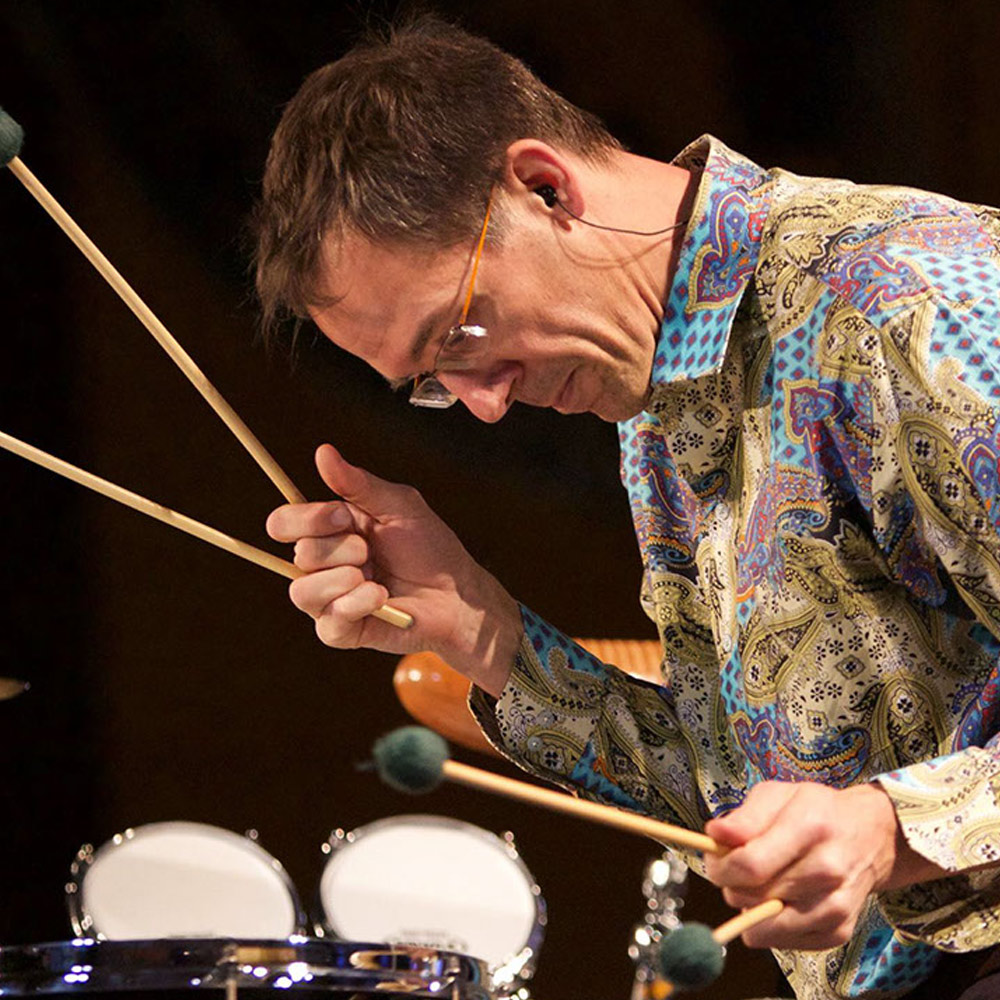
Gregory Beyer
Gregory Beyer: Fulbright Scholar, composer, educator, and “prodigiously talented percussionist” (Chicago Classical Review), Gregory Beyer is a contemporary music specialist who blends the disciplines of orchestral, jazz, and world music into a singular artistic voice. He is Artistic Director of Arcomusical, an organization dedicated to the Afro-Brazilian berimbau. Arcomusical released its first album, MeiaMeia, in 2016 on Innova Recordings and has subsequently appeared on WNYC, WBEZ, and NPR’s Weekend Edition Sunday. Arcomusical received a 2016 Chamber Music America Classical Commissioning Grant to create the 20-minute, four-movement “Roda” with composer Elliot Cole. “Roda” has received over two dozen performances and most recently was performed as a concerto with the Arizona State University Symphony Orchestra as “Roda Grande.” In March 2019 on National Sawdust Tracks, Arcomusical released its second album, Spinning in the Wheel.
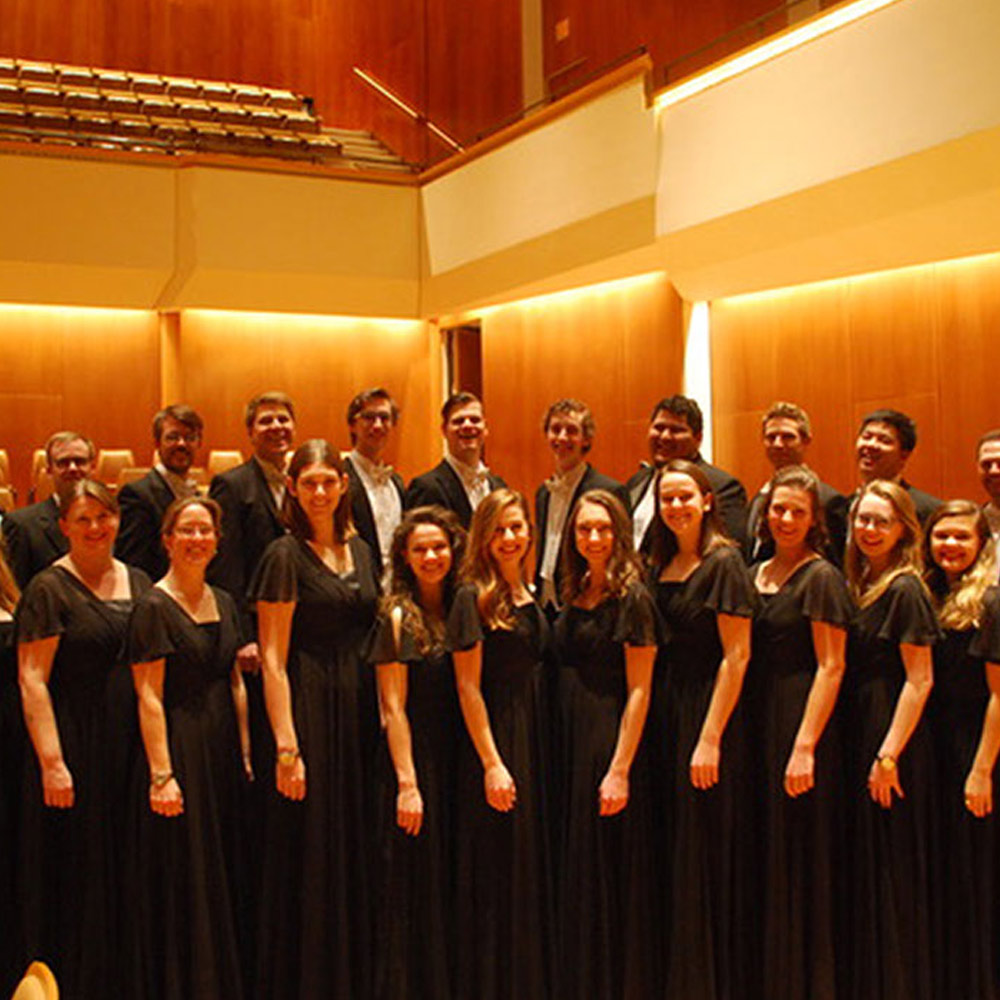
The University Of Illinois Chamber Singers
The University Of Illinois Chamber Singers is the premiere choral ensemble at the University, comprised of experienced and outstanding singers from across the entire student body. The ensemble, conducted by Dr. Andrew Megill, explores a broad range of choral music, from Medieval chant to newly commissioned works, while demonstrating the highest level of musical excellence. Performances in past seasons have included collaborations with Bang on a Can All Stars, Venice Baroque Orchestra, Champaign Urbana Symphony Orchestra, Urbana 415, and a performance tour of Vienna and Budapest with the Anton Webern Chor of the University of Music and Performing Arts Vienna. The Chamber Singers share a passion for enriching the lives of their audiences and the University community, regularly reaching out to connect with public school programs and concert series across the state.
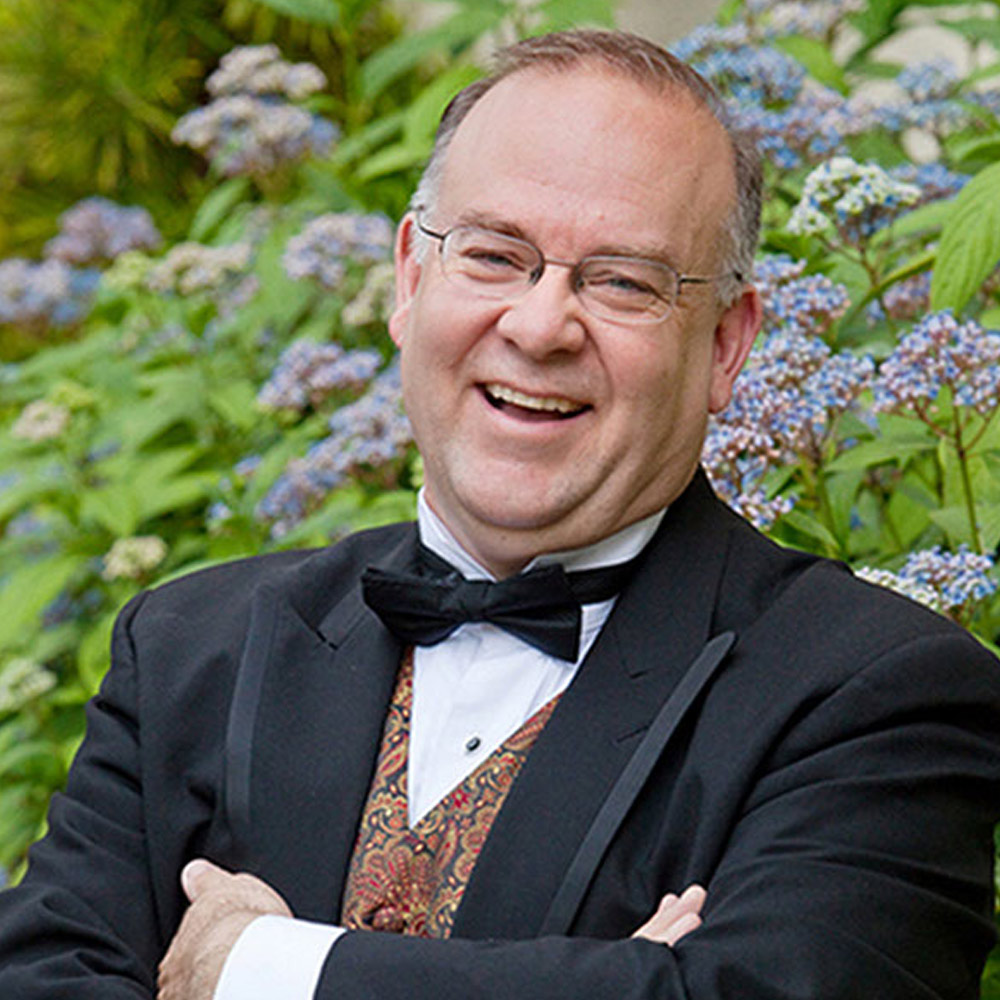
Andrew Megill
Andrew Megill is recognized as one of the leading choral conductors of his generation. He currently teaches at the University of Illinois (Urbana-Champaign) and conducts three of North America’s finest professional vocal ensembles: the Montreal Symphony Orchestra Chorus, the Carmel Bach Festival Chorale, and Fuma Sacra. His performances have been praised for their “power, subtlety, and nuance” and “profound spirituality” (Le Devoir, Montreal), and have been described as “piercing the heart like a frozen knife” (Monterey Herald) and “leaving the audience gasping in amazement” (Classical NJ).

William Moersch
William Moersch is Professor and Chair of Percussion at the University of Illinois Urbana-Champaign. Internationally renowned as a marimba virtuoso, chamber and symphonic percussionist, recording artist, and educator, he has appeared as soloist with orchestras and in recital throughout North and South America, Europe, the Far East, and Australia. A regularly featured artist at international percussion festivals, Moersch has performed on more than 70 recordings and is perhaps best known for commissioning much of the prominent modern repertoire for marimba. He has been honored by National Endowment for the Arts Recording and Consortium Commissioning grants and was the first marimbist to receive an N.E.A. Solo Recitalist Fellowship. Currently, he is Principal Timpanist of Sinfonia da Camera and the Champaign-Urbana Symphony Orchestra, Artistic Director of New Music Marimba, and an Artist Endorser for Pearl / Adams Percussion, SABIAN cymbals, Grover Pro Percussion, and Innovative Percussion mallets.
Notes
This album features three works inspired by literature: a poetic mono-opera based on selected poems by Emily Brontë; The Woman in the Dunes for Solo Percussionist, inspired by Kobo Abe’s novel, The Woman in the Dunes; and Five Waka poems by Saigyo, which sets waka poems by Saigyo, an ancient monk-poet. I am deeply fascinated by these profound texts, each from a different era. The focal concept of this album was composing music to merge with the texts.
— Akemi Naito
Texts
Videos
Akemi Naito: poetic mono-opera, Emily Brontë, excerpt (1)
Greg Beyer plays “The Woman in the Dunes” by Akemi Naito
